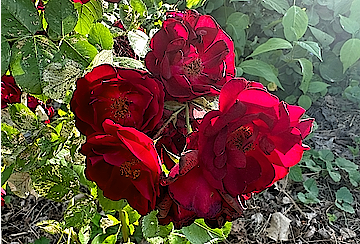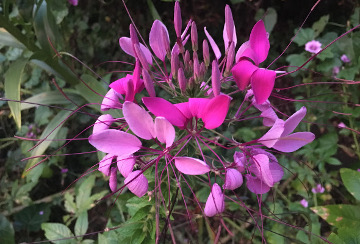
Wayward Rose

From the remnants of my Lily Pons rose, a stunning, resilient, and blossoming dark red Dr. Huey emerged like a phoenix.
I spent the early summer marveling at its magnificent and abundant blooms, but eventually forgot about it.
To my astonishment, at the end of the season, I discovered that this lovely rootstock is a climber.
A 15-foot long cane has grown and is now proudly climbing up a pine tree, while the other two canes, nearer to the front of the border, are draping over the lawn.
You don't move a thriving rose; you thank your lucky stars and hope it stays that way. People reorganize their gardens around established roses, so moving it is completely out of the question.
You don't prune a climber. It blooms on old wood, and you'd be killing all next year's flowers.
Having a rose thrive in the wrong spot is a much better problem to have than struggling to reanimate an anemic leafless stick placed to perfection.
I guess I'll have to train it somehow.

Shade Garden

Gardens are living entities that flourish and undergo changes over time, and even though I was aware of this, the current configuration caught me off guard: most of my yard now seems to be in the shade.
The flower borders have plenty of shade loving plants, but I wasn't ready for a completely shaded garden.
Adjustments and planning will be necessary before next spring.
I have to amend the soil. Resilient plants can do without good soil or sunshine, but rarely without both, and the tree roots are anything but friendly to the undergrowth.
Most perennials labeled for shade actually need about four hours of sunshine a day to bloom, and the list of shade flowering plants is rather short.
The borders will get enough sunshine in spring, of course, until the trees leaf out, but sun loving summer and fall flowers will not thrive.
It looks like it's going to be impatiens and begonias again.
